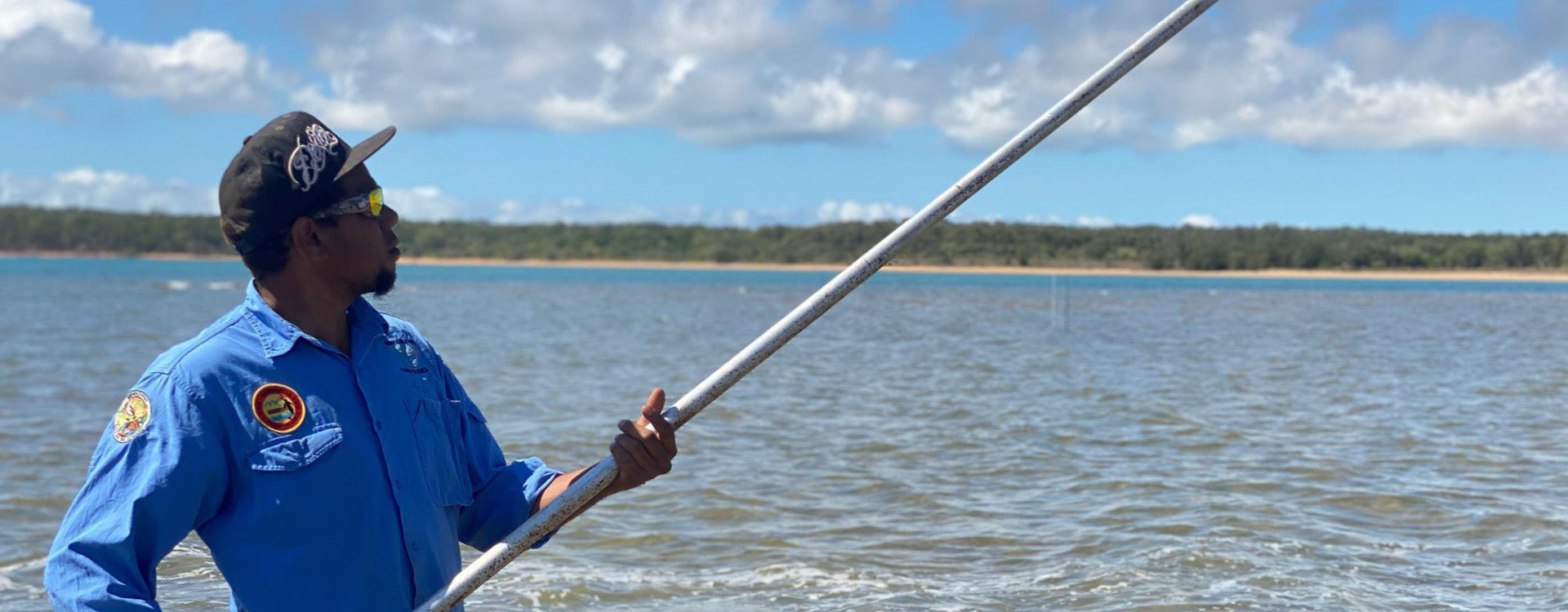
Monitoring Fish Habitats on Groote
The sea around the Groote archipelago has as many species of fish as some parts of the Great Barrier Reef.
This was confirmed in a major survey and habitat mapping project completed in 2019 by the Australian Institute of Marine Science on behalf of the Anindilyakwa Land Council.
The project provided training and skills development for the Anindilyakwa Land and Sea Rangers, particularly in carrying out fish surveys using BRUVS, baited remote underwater videos systems.
BRUVS are baited video cameras deployed underwater for 30 minute intervals – all fish attracted to the bait or even just swimming past the cameras are recorded and later counted and identified.
Ranger Cassie Maminyamanja says: “Doing BRUVS helps us to learn more about the fish in our sea country. It’s interesting to watch them on the videos when we get back to the base.”
And ranger Christinale Lalara says: “We have learnt new skills doing BRUVS, and it’s fun because we get to go out on the boat. There is usually time to do some fishing while we’re waiting to collect the cameras.”
Using the skills they developed with this method, the rangers designed and are now using an annual BRUVs-based fish monitoring program in coral reef and seagrass, with a focus on species of cultural significance.
The results from the monitoring program can be used as an indicator of sea country health, which helps with marine management.
The monitoring program is in its second year. So far, 154 fish species have been identified in the archipelago by using BRUVS.
It is anticipated that more species will be added to the list as monitoring continues.
